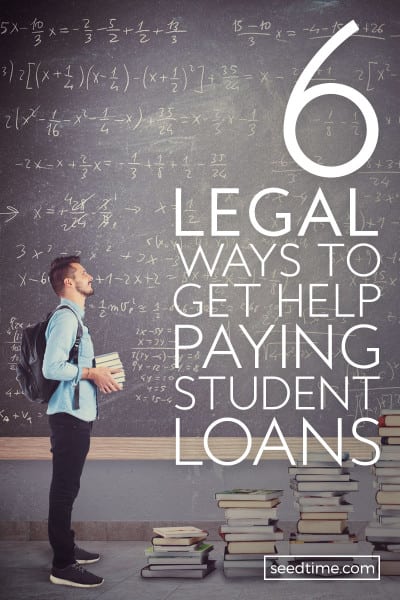 College is expensive. There’s no denying it. According to The Institute for College Access & Success, 69% of students graduating from public and non-profit colleges in 2014 had some form of student loan debt.
College is expensive. There’s no denying it. According to The Institute for College Access & Success, 69% of students graduating from public and non-profit colleges in 2014 had some form of student loan debt.
The average amount? $28,950.
That’s a sobering thought.
Paying off that kind of debt isn’t easy, but it is possible. And what you might not know is there is help available to pay off that debt. Legally.
How can you legally get help paying off your student loans?
Refinance them!
According to Credible.com the average user will save $18,000 by refinancing their student loans. This means massive savings over the long term, but also lower monthly payments as well!
And it is far easier than refinancing a house, so even though it sounds complicated, you should do yourself a favor and at least see how much you can save by refinancing.
Choose a College that will Help You
Cost is often a determining factor when students decide where to go to school. In an effort to be more competitive, some colleges have begun to offer loan repayment assistance programs.
Rules vary from college to college, but the idea is that if a student who is working full time makes under a certain salary after graduation, the school will help repay the student loans.
Right now several Christian colleges offer loan repayment assistance programs for undergraduates. These programs are more common in law schools, but with the cost of college rising, we may see more programs for undergraduates in the future.
For more information:
- Loan Repayment Assistance Program for Undergraduates
- Loan Repayment Assistance Programs for Law Schools
Work for an Employer that will Help You
Just like colleges are competing for students by offering loan repayment assistance programs, employers are jumping on the bandwagon by offering repayment assistance programs of their own.
The number of employers offering help with student loan payments is small, just 3%, but growing. The startup Gradifi, which aims to help companies offer student loan repayment benefits to employees, has already signed nearly 100 interested companies. Some employers offer to make payments toward student loans while others offer refinancing options with attractive terms.
For more information:
Work in an Underserved Community

If you’re a teacher, a healthcare worker, or even a veterinarian, you may be able to qualify for student loan forgiveness if you work in an underserved community.
Teachers who teach in certain low-income communities for five consecutive years may have up to $17,500 of their loans forgiven.
Similar programs exist for nurses, veterinarians, doctors, and more. If you’re working in an underserved community, it’s worth a Google search to see if there are programs out there to help you repay your student loans.
For more information:
- 5 student loan forgiveness programs
- Teacher Loan Forgiveness
- Nurse Corps Loan Repayment Program
- AAMC Database of Loan Forgiveness Programs for Doctors
- The Veterinary Medicine Loan Repayment Program
- Indian Health Service Loan Repayment Program
Work in Public Service
Do you work for a non-profit? Or the government? If so, you may qualify for student loan forgiveness through the Public Service Loan Forgiveness Program.
It works by paying the remainder of your Direct Loans after you have made 120 qualifying payments on your own while working full time for a program approved employer.
Even if you don’t work full time for a qualifying organization, you may be able to take advantage of this program by serving full time in AmeriCorps or the Peace Corps.
For more information:
- Public Service Student Loan Forgiveness Program
Join the Military

When you join the Army, Navy, Air Force, or National Guard you may become eligible for student loan forgiveness.
It’s a big commitment, but the payoff is also big. For instance, the U.S. Navy offers to pay up to $65,000 over the course of your service.
Similar programs exist for other branches of the military, each having their own requirements and terms.
For more information:
- Active Duty Health Professions Loan Repayment Program
- Air Force Student Loan Repayment (Search for “Student Loan Repayment”)
- National Guard Student Loan Repayment Program
- U.S. Navy Student Loan Repayment Program
Choose an Income-Driven Repayment Plan
You may be able to get part of your student loans forgiven if you choose an income-driven repayment plan.
The government offers four such plans for federal student loans:
- Revised Pay as You Earn Repayment Plan (REPAYE)
- Pay as You Earn Repayment Plan (PAYE)
- Income-Based Repayment Plan (IBR)
- Income-Contingent Repayment Plan (ICR)
Each plan has its own requirements for which loans qualify and how they calculate payments. With all of these plans, the remainder of your loans will be forgiven after you make 20-25 years of payments.
For more information:
- Income-Driven Student Loan Repayment Plans
Things to Keep in Mind

Before you apply for any of these programs, be sure you understand the terms and conditions.
Many programs have restrictions on:
- The types of loans they will forgive.
- What constitutes an eligible employer.
- How many payments you must make on your own before you are eligible for forgiveness.
- When you took out your loans.
The other big thing to remember is that the amount of your loan that is forgiven will be considered taxable income by the IRS. Having a large student loan forgiven can mean you will owe a lot more in taxes than usual. Be prepared and set some money aside.
For more information:
Don’t Count on Bankruptcy
One way that you will not be able to get rid of your student loan is by declaring bankruptcy. Unlike other debts, student loans are not automatically discharged when you declare bankruptcy.
In order to discharge your loan in bankruptcy, you must first prove that repaying it would cause undue hardship, that the hardship would continue for much of the repayment period, and that you have made significant efforts to repay the loan.
If you can’t prove all three, your loan will not be discharged.
For more information:
- Discharging Student Loans in Bankruptcy
Think Before You Borrow
The best way to avoid large amounts of student loan debt, of course, is to not borrow in the first place.
Even though options exist to help you repay student loans, these options are saddled with rules and regulations that may make it difficult to qualify.
If you are applying to college or have an upcoming college student in your family, consider options like a community college or working your way through college, even though it may take longer to graduate.
Whatever you do, make sure to think about how you will repay your student loans before signing on the dotted line.
4 tips to help you with your student loan payments
Does it surprise you that 86% of 4-year undergraduate students who apply for federal student aid will borrow money to go to school? With average student loan debt hovering over $23,000 for graduating seniors, it’s easy to see how so many people can be affected by the burden of student loan debt.
If you were a May graduate, your six-month grace period is ending and those student loan payments are going to kick in within the next month or so. Now’s the time to take control of those debts and these tips will get you on the right track to paying down those debts faster than you can imagine.
1. Get Organized
For those students who are in school right now, do yourself a favor and stay organized. Create a separate folder for each lender you use and file each notice you get from them.
If you’re out of school, you should be getting summaries in the mail about your payments and current balance. Be sure to organize those and keep the online account login username and password in a place you can access if you forget what they are. We use a financial snapshot to organize our account information, and it’s saved us the headache of resetting our password when we forget what it is.
Bonus Tip For Getting Organized
If you’re in school, open a separate checking account for your student loans and only use this account for school expenses (not eating out or other things you should pay for with money you earn.)
I was foolish my freshman year and saw a surplus of $500 in my loans account. Instead of using it the next year for school expenses, I withdrew it to ‘live on’ during the summer. I didn’t really need it, and encourage you to keep those accounts separate and designated only for school expenses.
2. Build a Loan Payment Account
My wife and I opened a savings account at our bank and told our loan provider to draw each month’s payment from this account. Before the payment is drawn each month, we automatically move money from our checking account into the savings account. This helps us to keep the loan payments separate from other bills and automates it for us.
One thing that has helped us tremendously is to keep a buffer in the savings account. If an emergency comes up and we can’t move money from our checking account fast enough, the buffer in the savings account will take care of the student loan payment. We try to keep an extra $500 in the savings as a buffer, but you may need less depending on your loan payments.
Bonus Tip For Creating a Buffer
If you automate a transfer from your checking account to your savings, round up the payment to the nearest round number plus $10. The loan payment that’s withdrawn from the savings account will remain the same, but you’ll build a buffer in your payments account that way. This way, you’ll be prepared in case you run into trouble one month and can’t seem to make a payment.
3. Budget for the Payments
Log into your lender’s website and look for the ‘calculate my payment’ link. They should provide you with an estimate of what your payments will be. (I’d encourage you to do this while you’re in school too!)
With your payments in mind, you should be able to anticipate how your budget will be affected. Use the six-month grace period to your advantage and try to tweak your budget to include the loan payments. Set aside that monthly payment during the grace period and use that to build an emergency fund before you have to really start making payments.
Bonus tip for Budgeting the Payments
If you don’t think you’ll be able to afford the payments, you can apply for Income Based Repayment through your lender. Income Based Repayments (IBR) lengthens the repayment of your loans and lowers your payments according to your adjusted gross income and loan amount.
4. Snowball the Loans
Dave Ramsey popularized the debt snowball, and it works great for paying down those pesky student loans. You’ll probably notice that your loans are broken into a few different types (Stafford, unsubsidized, Perkins, etc), have different rates, and have different lenders. If so, you can use this to your advantage and eliminate the small school loans with extra money you make. Paying down a small loan completely will free up that payment, allowing you to snowball the next biggest loan.
These tips have worked for us and I hope they work for you too! How have you managed student loans? Meet you in the comments!




